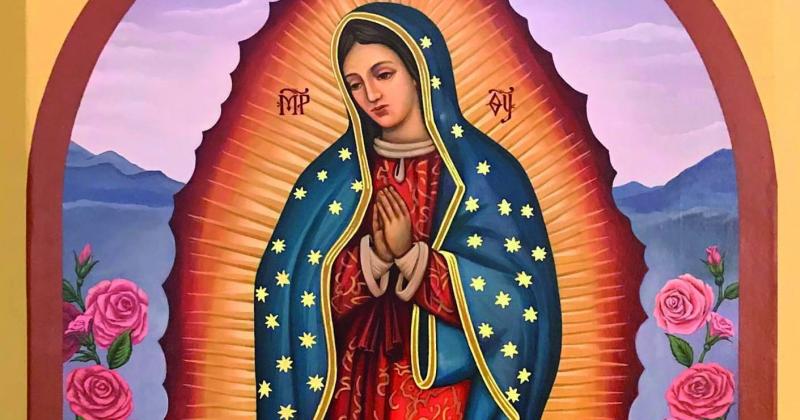Not all Catholics have an image of Our Lady of Guadalupe at home. Technology comes to our aid. From our computers, from mobile phones we can easily find the beautiful Mexican Madonna that Pope Francis invites us to pray to receive the grace of plenary indulgence, extended to all the faithful of the world even remaining in their homes.
The devotion of the people of God is important, and it must never be trivialized or scorned. We are interested in highlighting two specific aspects of the apparition of Our Lady of Guadalupe to the Indian Juan Diego, which occurred on December 12, 1531 on the hill of Tepeyac, today in the Federal District, near Mexico City: Mary of Guadalupe is Our Lady of the “interculturality” and “respect for the elderly”.
In a moment of deep hatred between the Spaniards and indigenous peoples, unfortunately also in the name of the Christian religion, Our Lady surprised everyone: she was able to miraculously unite the two peoples who did not understand each other and were willing to destroy themselves, indicating the way to peaceful coexistence, indeed for a mixture, a “mestizaje” that allowed to form a new people. It was not a magical act, but it showed the men and women who were then in conflict that it is possible to open hearts, and that God wants peace in his name. Peace comes from the surprise of an image on the “tilma” of Juan Diego.
For the Indians the highest moral authority, still today, were “the sages, – tlamatinime – the priests guardians of tradition”, and among these the most respected were “teomama” and “amoxhua”. Every important enterprise and activity was presided over by the priests who carried an image or a sheet where they drew the paintings that represented the wisdom of their traditions.
Our Lady evangelized by giving an unexpected but also very familiar gift: her image imprinted on the cloak of one of them is an authentic printed code, the sheet “of ancient and new wisdom”, which however had to be delivered to the Spanish bishop, that became their new "Amoxhua". And for them it all made sense. Bishop Zumárraga did not understand any of this. His new role was completely obscure to him, but this was after all of little interest to the natives who had opened their hearts.
On the other hand, Our Lady well knew that a Spanish churchman would not be convinced with bouquets of flowers collected in winter and not even with a beautiful image; She needed a test suited to her Western sensibility: “a miracle”. Mary instantly healed Juan Diego’s elderly uncle, Juan Bernardino, who was dying. The bishop did all the investigation of the case, and had to see the miracle as irrefutable evidence and so he was convinced to erect the Sanctuary to Our Lady and her Son.
Juan Bernardino highlighted the intercultural detail of the “Virgen Morena” when she appeared to him too to heal him. She reveals her name not to the young Juan Diego, but to the elderly; indeed, she also told him her mission: she came to unite the two peoples, and she wanted her image, so blatantly India, to bear a totally Spanish name, Santa María de Guadalupe.
The missionaries at that time thought that the deities of indigenous religions were manifestations of the devil, and for this they came to justify the mass killing of the elderly to prevent the transmission of ancient traditions. Our Lady instead chose just an old man who kept the tradition intact but knew how to open to the Gospel.
The two peoples, the Spanish and the Indians, separated by abysses of different cultures, mingled, not only stopped killing themselves, but merged, giving rise to a new people. Around the love of a Mother brothers were discovered and their identities did not disappear by magic, but they helped to build a new future.
In this moment of crisis that accentuates the epochal change, Pope Francis seems to propose the message of Santa Maria di Guadalupe: “As Jesus told us: «You are all brothers» (Mt 23:8). … In the dynamics of history, and in the diversity of ethnic groups, societies and cultures, we see the seeds of a vocation to form a community composed of brothers and sisters who accept and care for one another” (Fratelli tutti 95-96).
